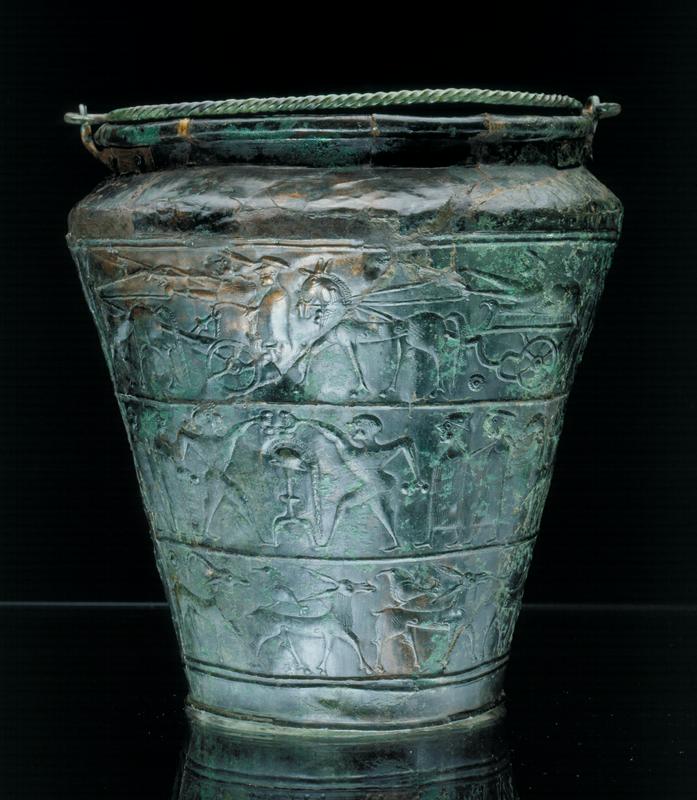
Novo Mesto, nestled among the hilly landscape of Slovenia’s Dolenjska region, is a picturesque and relatively prosperous town with several thriving industries. Recently, however, it has also become a popular destination for visitors, many of whom come to marvel at ancient ceremonial bowls known as situlae.
From roughly the 8th to the 4th century B.C., the area was a part of a thriving European civilization known as the Hallstatt Culture, which had its own nobility and traded extensively with the Greeks and the Etruscans. The civilization was known for exquisite jewelry, but perhaps its greatest artistic achievement came in the form of intricately decorated situlae – bucket-shaped ceremonial vessels.
More than a dozen such bronze situlae have been discovered in the Novo Mesto area – an archeological find without equal in this part of Europe. The vessels contain both ornaments and figural elements that tell stories. Since the Hallstatt Culture had no writing system, the situae provide invaluable insight into how people once lived on the territory of modern-day Slovenia – what they wore, how they hunted, and what they did to entertain themselves.
The situlae feature images of battles, banquets, and erotic scenes, as well as numerous portrayals of hunts. At first, the origin of the vessels was uncertain, since the intricate nature of the vessels led some archeologists to speculate that they were of Greek of Etruscan origin. But because the vessels featured animals native to the Dolenjska region and local clothing styles, it soon became apparent that they were locally made – and that they provided a new window on a little-known civilization. The situlae date back to an era in which the Mediterranean basin was the origin of most high European art. In fact, discoveries of such intricate artifacts are rare this far inland and the vessels have challenged experts’ understanding of the ancient world.
The situlae not only provide archeologists a glimpse of a little-known society, but are also drawing increasing numbers of visitors to the Dolenjska Regional Museum in Novo Mesto, where they have been put on display. To the people of the town, they are a source of pride. Not only is a large local hotel known as the Situla Hotel, but the local tourist organization is increasingly basing its promotional activities around the mysterious vessels from an ancient civilization that once called this beautiful part of Slovenia home.

































































